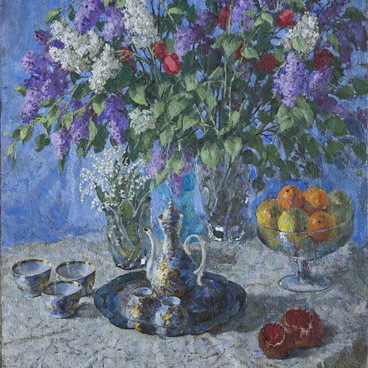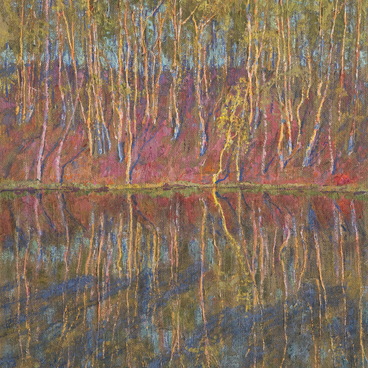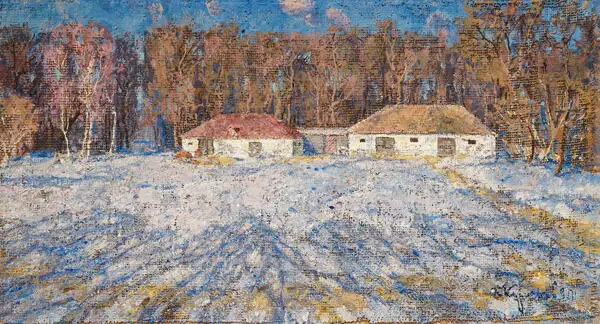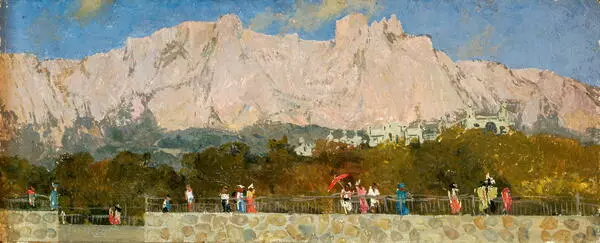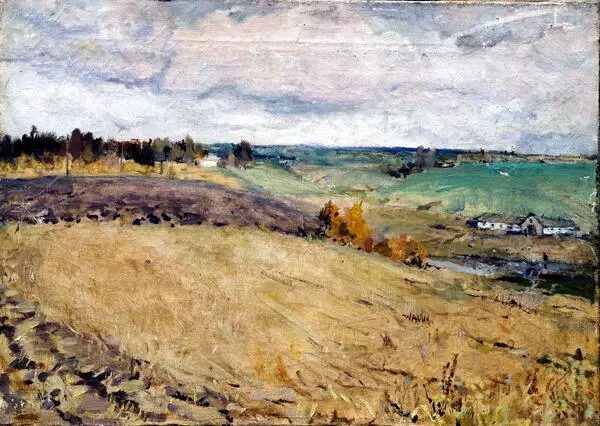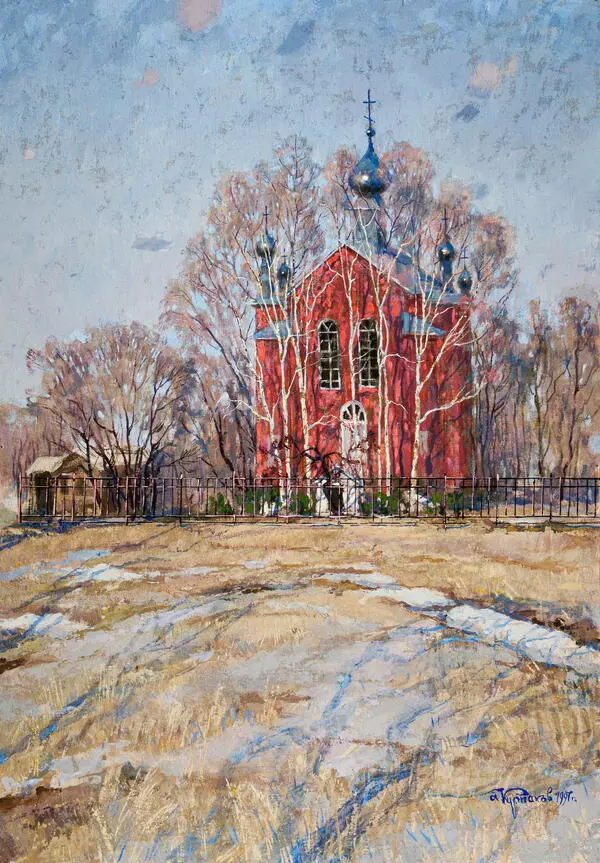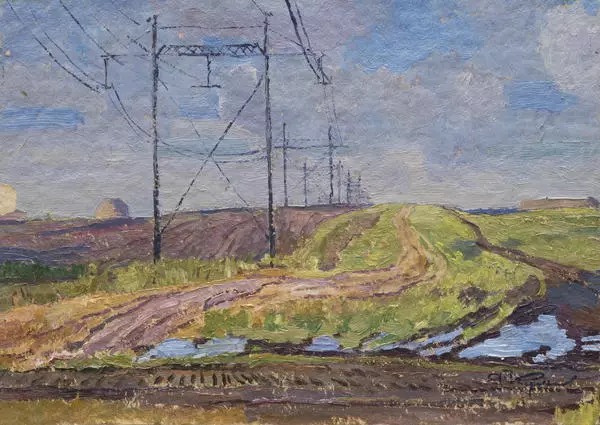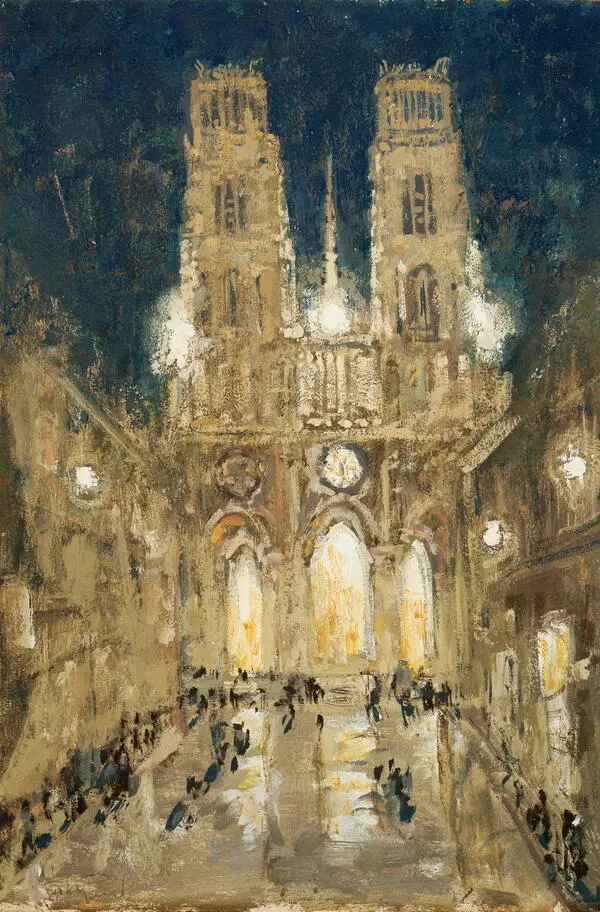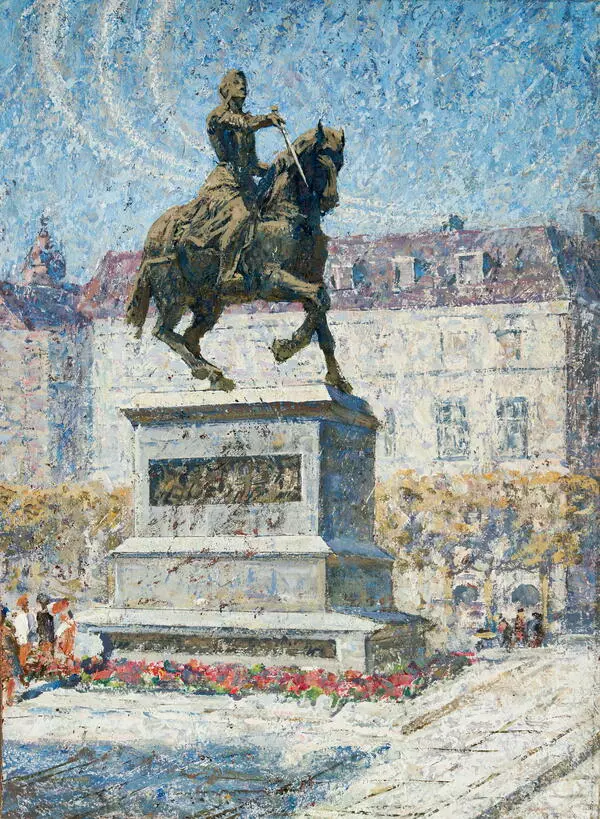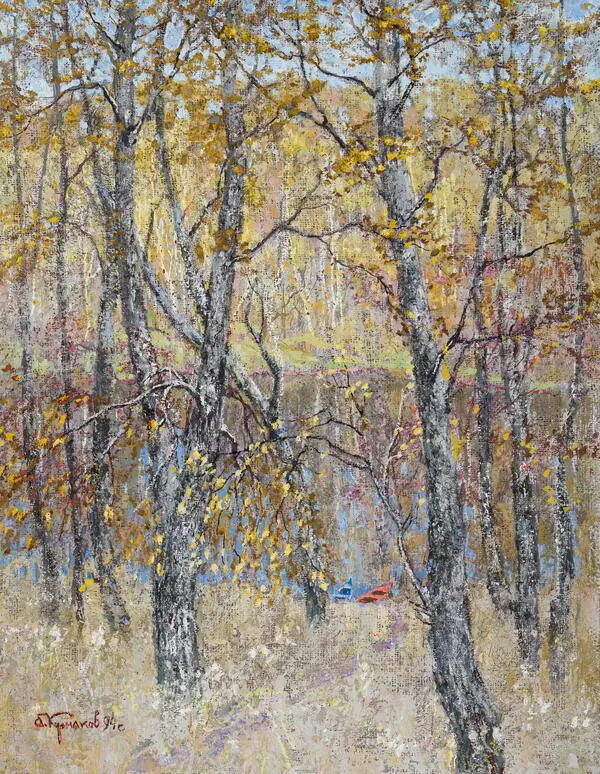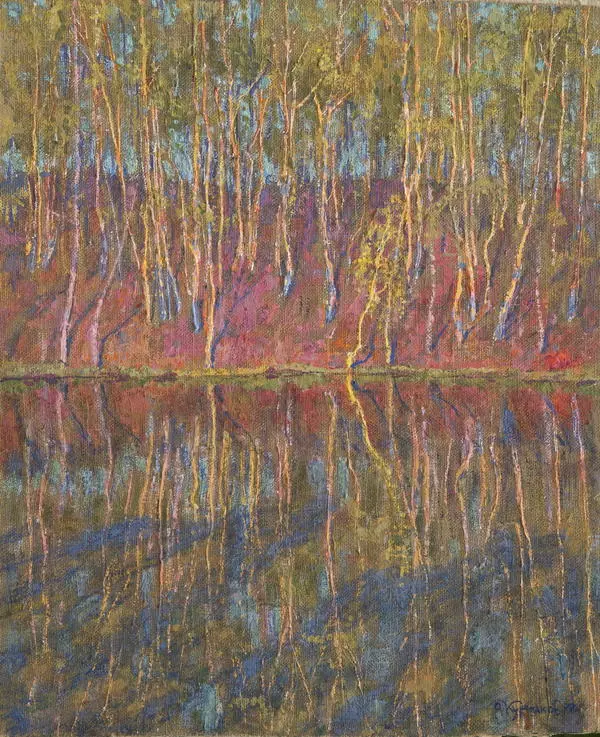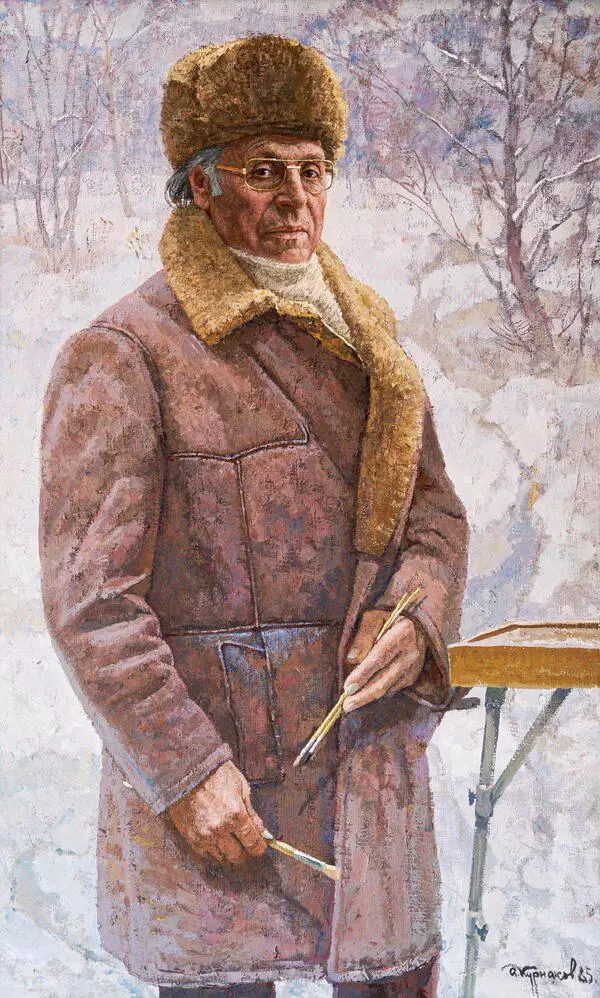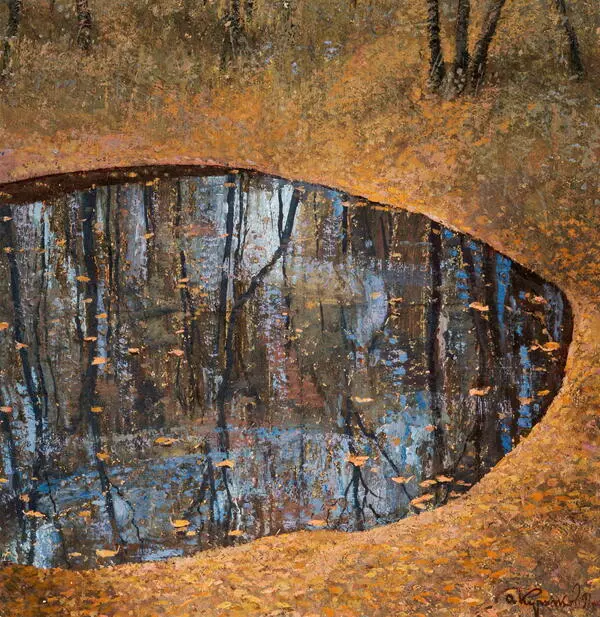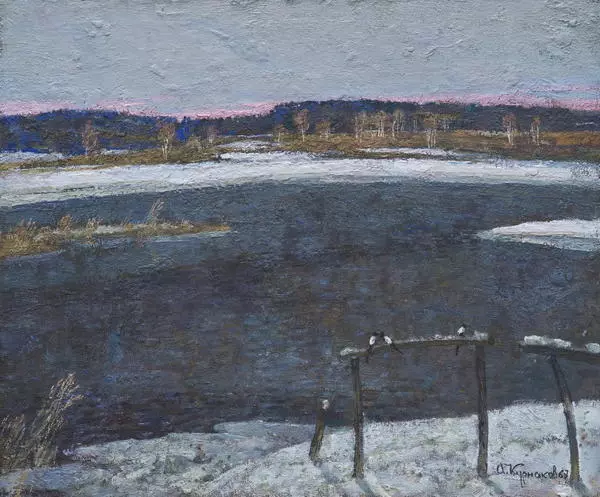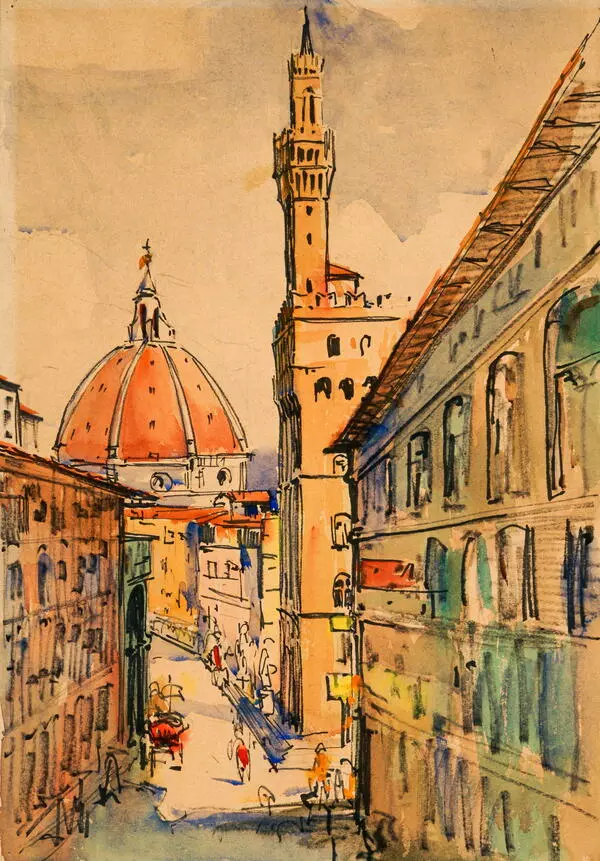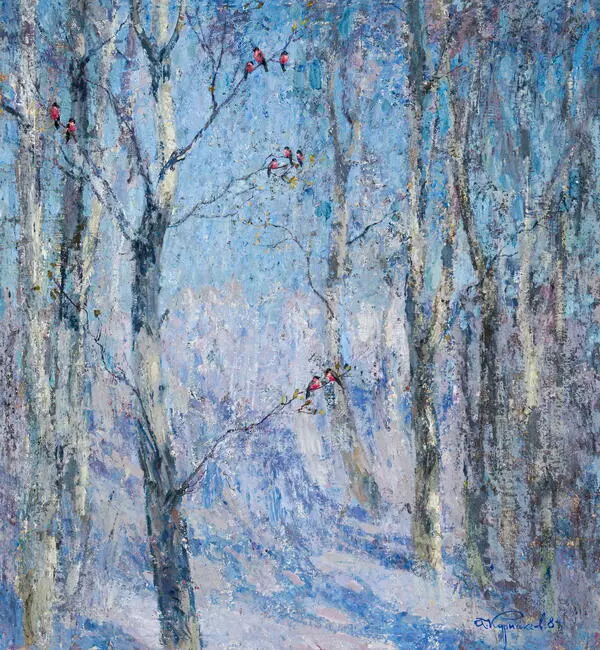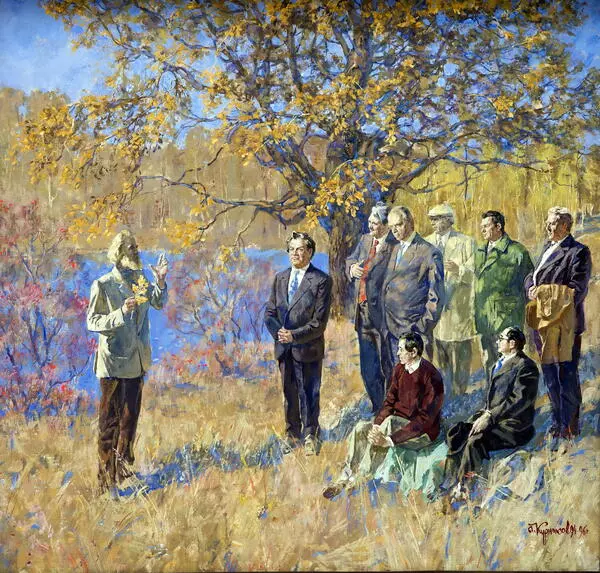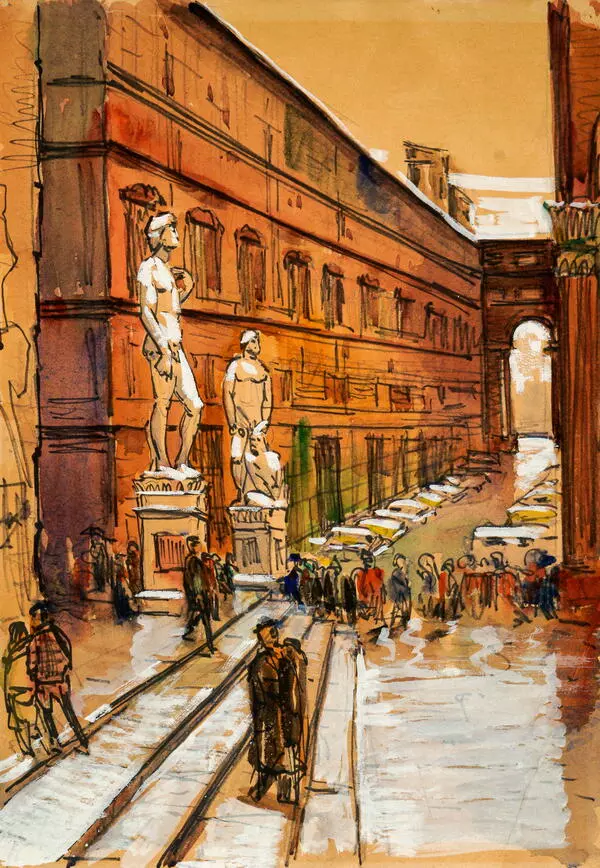A sunny day in spring. In the center, on a slope covered with rare grass and bright pink flowers, we see two birch trees grown together at the base with light trunks and lush crowns against the background of a bright blue clear sky. The image of the total mass of trees in the center occupies almost the entire space of the landscape, which is played up with the vertical format of the picture.
This draws the viewer’s attention to every detail in the image of the white-bark beauties. The whiteness of the powerful birches’ trunks not only makes the landscape festive and solemn but is also the central compositional and optical accent that holds the entire structure of the image. It also contrasts with the background of the landscape, being the lightest spot in the painting, on which the ray of sun falls. Thus, it serves, like a tuning fork in music, the purest note.
Birch can rightfully be called a cultural and historical symbol of the Russian people, and once it was a sacred tree and pagan Rus, family’s guardian deity. Mermaids were hiding in its branches; birch bark letters were written on it. This tree was forever glorified by Sergei Yesenin in the poem ‘White birch under my window’, but Ivan Bunin, Fedor Sologub, Afanasy Fet, Samuil Marshak, Evgeny Yevtushenko mention it in their poems no less poetically. And Vsevolod Rozhdestvensky confesses his love to her in this way:
Its light outfit is wonderful,
There is no tree dearer to the heart,
And many musing songs
It is sung by the people about it.
Since ancient times, birch has been considered the tree of brides. It was paired with an oak - the male tree. And it is no coincidence that the theme of the search of a magpies’ pair sounds in the picture. Among the tree branches sitting and flying birds with black and white plumage are depicted. In the foreground on the right, the couple seems to be talking and agreeing on something peculiar.
Magpies are monogamous, and that is why the choice of a partner is taken very seriously and responsibly. They form a couple already in the first year of their life. First, they look closely at each other, and next spring they take care of building a nest and of chicks.
The foreground of the picture seems to be woven from an interweaving of openwork bluish shadows on a light background. In the background is the image of the forest, on the right - the road stretching into the distance beyond the low horizon line. The color of the picture is azure-blue, laced with light. Spring gives nature an awakening from a long winter sleep, the soul enlivens and blooms.
This draws the viewer’s attention to every detail in the image of the white-bark beauties. The whiteness of the powerful birches’ trunks not only makes the landscape festive and solemn but is also the central compositional and optical accent that holds the entire structure of the image. It also contrasts with the background of the landscape, being the lightest spot in the painting, on which the ray of sun falls. Thus, it serves, like a tuning fork in music, the purest note.
Birch can rightfully be called a cultural and historical symbol of the Russian people, and once it was a sacred tree and pagan Rus, family’s guardian deity. Mermaids were hiding in its branches; birch bark letters were written on it. This tree was forever glorified by Sergei Yesenin in the poem ‘White birch under my window’, but Ivan Bunin, Fedor Sologub, Afanasy Fet, Samuil Marshak, Evgeny Yevtushenko mention it in their poems no less poetically. And Vsevolod Rozhdestvensky confesses his love to her in this way:
Its light outfit is wonderful,
There is no tree dearer to the heart,
And many musing songs
It is sung by the people about it.
Since ancient times, birch has been considered the tree of brides. It was paired with an oak - the male tree. And it is no coincidence that the theme of the search of a magpies’ pair sounds in the picture. Among the tree branches sitting and flying birds with black and white plumage are depicted. In the foreground on the right, the couple seems to be talking and agreeing on something peculiar.
Magpies are monogamous, and that is why the choice of a partner is taken very seriously and responsibly. They form a couple already in the first year of their life. First, they look closely at each other, and next spring they take care of building a nest and of chicks.
The foreground of the picture seems to be woven from an interweaving of openwork bluish shadows on a light background. In the background is the image of the forest, on the right - the road stretching into the distance beyond the low horizon line. The color of the picture is azure-blue, laced with light. Spring gives nature an awakening from a long winter sleep, the soul enlivens and blooms.
